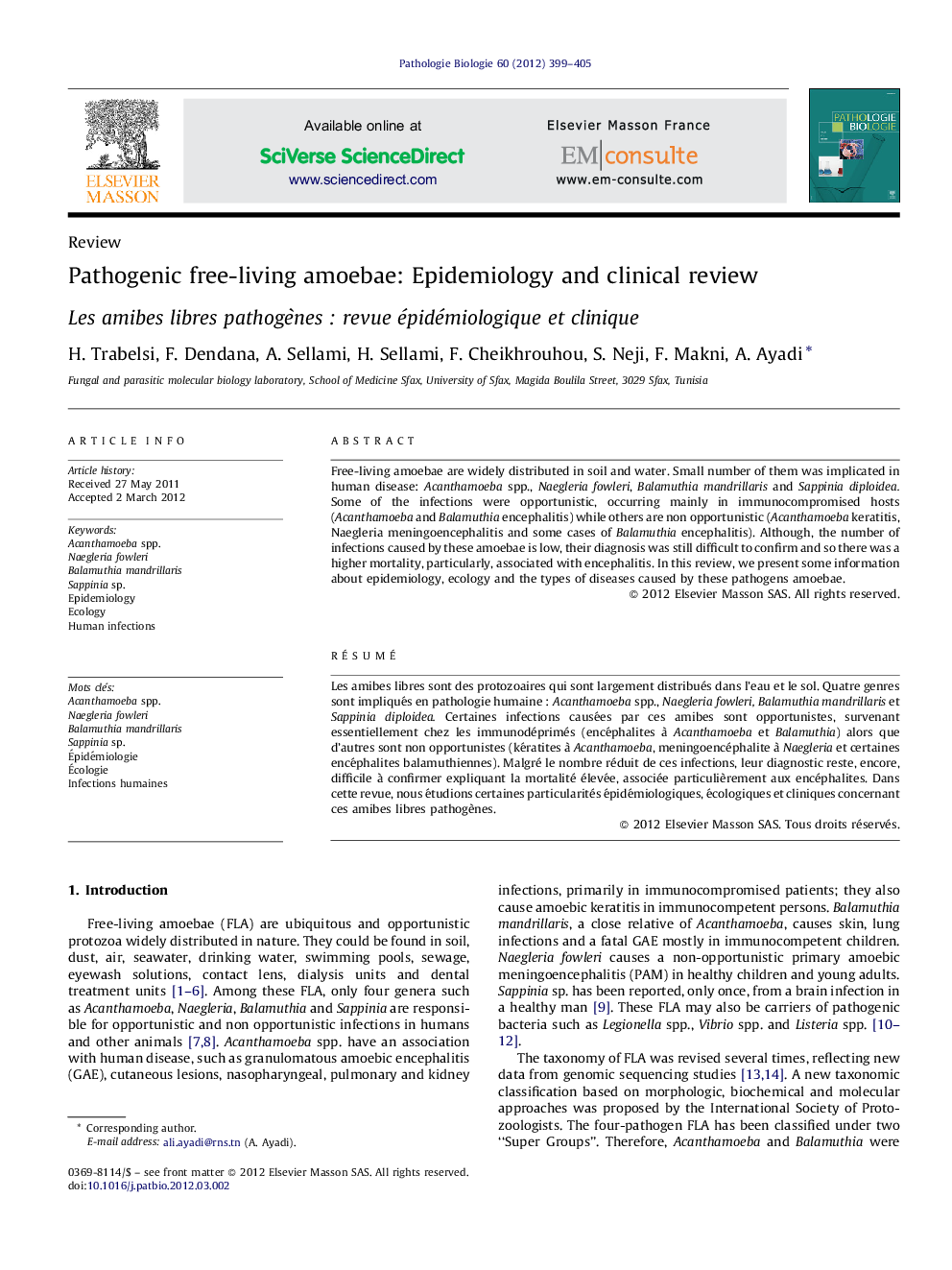| Article ID | Journal | Published Year | Pages | File Type |
|---|---|---|---|---|
| 4136092 | Pathologie Biologie | 2012 | 7 Pages |
Free-living amoebae are widely distributed in soil and water. Small number of them was implicated in human disease: Acanthamoeba spp., Naegleria fowleri, Balamuthia mandrillaris and Sappinia diploidea. Some of the infections were opportunistic, occurring mainly in immunocompromised hosts (Acanthamoeba and Balamuthia encephalitis) while others are non opportunistic (Acanthamoeba keratitis, Naegleria meningoencephalitis and some cases of Balamuthia encephalitis). Although, the number of infections caused by these amoebae is low, their diagnosis was still difficult to confirm and so there was a higher mortality, particularly, associated with encephalitis. In this review, we present some information about epidemiology, ecology and the types of diseases caused by these pathogens amoebae.
RésuméLes amibes libres sont des protozoaires qui sont largement distribués dans l’eau et le sol. Quatre genres sont impliqués en pathologie humaine : Acanthamoeba spp., Naegleria fowleri, Balamuthia mandrillaris et Sappinia diploidea. Certaines infections causées par ces amibes sont opportunistes, survenant essentiellement chez les immunodéprimés (encéphalites à Acanthamoeba et Balamuthia) alors que d’autres sont non opportunistes (kératites à Acanthamoeba, meningoencéphalite à Naegleria et certaines encéphalites balamuthiennes). Malgré le nombre réduit de ces infections, leur diagnostic reste, encore, difficile à confirmer expliquant la mortalité élevée, associée particulièrement aux encéphalites. Dans cette revue, nous étudions certaines particularités épidémiologiques, écologiques et cliniques concernant ces amibes libres pathogènes.
